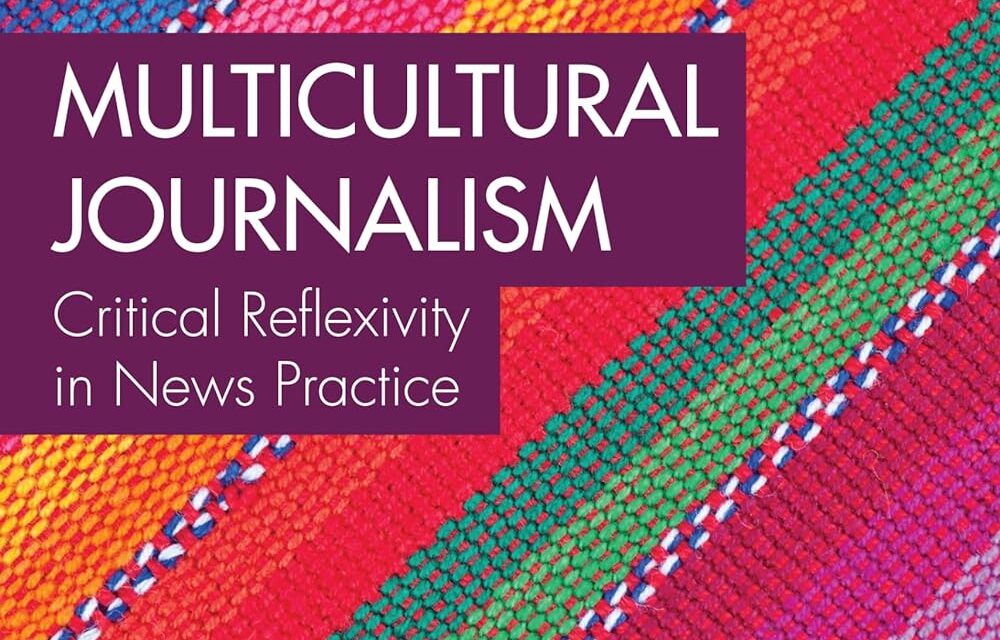
 By María Suárez Toro, Escribana,
By María Suárez Toro, Escribana,
Jan 6, 2024
A new book by ESCRIBANA’s Margaret Thompson presents an analysis and proposal to challenge power dynamics and processes in the newsroom in the United States, as experienced and studied by the author as (now emeritus) associate professor in the field at the University of Denver, radio producer at Feminist International Radio Endeavour (FIRE) and writer in Escribana.
Published by Routledge under the tittle Multicultural Journalism Critical Reflexivity in News Practice, the book explores the power dynamics and implicit processes in and out of the newsroom that shape mainstream news as predominantly White and male, both historically and today.
News and newsrooms have long been a White male domain, which has shaped news decisions and content, and puts BIPOC (Black, Indigenous, and people of color, term used in the USA) and women, particularly BIPOC women, at a strong disadvantage. Journalistic practices such as objectivity and selection of topics and sources are also rooted in White supremacy and patriarchy.
The book provides historical and contemporary analyses of case examples of journalism based on White patriarchy, and the evolution of journalistic “ideals” and practices.
Thompson then proposes a feminist reflexive model as an alternative way of doing journalism, incorporating critical reflexivity on the part of both journalists and their sources, as a way of “sharing the power of the microphone,” and disrupting the traditional power dynamics of mainstream news traditions and practice.
Historically, news was framed by White supremacist ideologies that were promoted and perpetuated in media, particularly White-owned newspapers, reinforcing the hegemonic power of Whiteness as a strategic rhetoric of conquest, while also garnering massive profits.
Examples of White news framing in the book:
- Land grabs and massacres of millions of Native Americans were supported
and even encouraged by news media. - Slavery, with the brutality and mercantilism of Black men, women and children was supported by media, including framing of Black human beings as “savages,” and slavery as “natural.”
- Tulsa Massacre of 1921 – killing of about 300 Black men, women and children, and destruction of a prosperous Black community by a White mob, fueled by racism and greed. Media ignored the crimes or referred to them as a “race riot.”
- WWII imprisonment of 120,000 Japanese and Japanese Americans, with fear of the “Yellow Peril” encouraged by White newspaper publishers and editors.
- Women were long shut out of the “White boy networks” of newsrooms, although many maverick female reporters pushed to slowly open the doors and expand news coverage of women.
One of the most famous early women journalists was Black civil rights activist Ida B. Wells, who courageously documented the rampant horror of lynching following the legal end to slavery. Also, Nelly Bly gained worldwide fame with her investigative reports for a large daily newspaper in New York, which included an undercover project in a mental asylum, and a reporting trip around the world.
For most women, those who did get hired were expected to focus on the “women’s pages,” with lifestyle and fashion news, based on assumptions that women’s femininity would be harmed if they covered politics or the economy (an attitude that often continues today). The “second wave” feminist movement of the 1960s and ‘70s provided a major boost to women’s and feminist media, while more women entered the mainstream journalism field.
The book also includes an exploration of the history of journalism to reveal how news “ideals,” values and journalistic practices are rooted in White patriarchy and reinforce top-down power hierarchies. Positivism and the social sciences served as the basic philosophy and epistemology with assumptions that there is a single “truth” and “reality” of events and issues that journalists can observe and report upon if they use professional standards and methods. While many journalists today acknowledge that objectivity is an unrealistic goal, journalism textbooks continue to present this ideal as important to professional practice.
Also included in the book is a chapter on alternative media and journalism, which has a long history, and includes many different organizational structures and styles. Many alternative outlets seek to include topics and sources of those marginalized in mainstream media, and approaches to challenge the hegemonic corporate media. Feminist media such as FIRE – Feminist International Radio Endeavour (Radio Internacional Feminista) sought to amplify the voices of women, particularly indigenous and others from marginalized groups, whose perspective and insight into many issues is often ignored in mainstream news, as well as promotion of women’s human rights.
White patriarchy continues to underly mainstream news today, even with the massive changes brought on by technology and digital media, including imbalances in newsroom diversity as well as stereotypes and biased representations of non-White groups in news content.
One chapter explores the way that the presidencies of Barack Obama and later Donald Trump generated massive debates and conflicts about race, fake news, and news bias, presenting challenges to journalists who attempted to remain objective.
The book concludes with a proposal for a more reflective way of doing multicultural journalism that incorporates critical reflexivity for both journalists and their sources, and shifts the power dynamics of interactions. The objective of the model is to amplify grassroots voices and provide a platform for empowerment through reflexive connections with sources and audience members. This feminist reflexive model is based on the author’s work with FIRE—Feminist International Radio Endeavour (Radio Internacional Feminista). Thompson’s 33 years of university teaching, including directing of a graduate program on international & intercultural communication and coursework in that area also shaped the work.
The book concludes with recommendations by the author for a feminist pedagogy of journalism, incorporating critical reflexivity in news practices as a key component.



